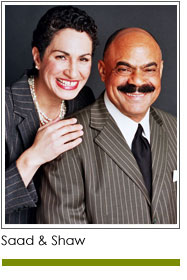 How do you measure customer service? Can a nonprofit organization, college or university use the same processes that a retail business would use?
How do you measure customer service? Can a nonprofit organization, college or university use the same processes that a retail business would use?
Nonprofits are increasingly asked to focus on the people they serve. This is not news. So many employees, volunteers, board members and executives at nonprofits are all about the people they serve. They are passionate, compassionate, committed, and resourceful.
But how do people who are “served” actually feel about the “service” they receive? That’s something that donors and funders often want to know. “Customer service” is also critical to management and board leadership: they want to know how well the organization is delivering on its mission and vision, and where improvements are needed.
And, let’s be clear – customer service is of critical importance to people who are “served” by nonprofits. Many times organizations do the best they can with the resources available to them. But what if that’s not good enough? And who decides?
To learn more we talked with Lewis Rambo, PhD. “Typical customer service propositions for firms like Target, Walmart, Macy’s, Amazon, and countless other “brick and mortar,” and Internet-based merchandisers are fairly straightforward. But many nonprofits – including colleges and universities – have missions that are complex and often underfunded.” That’s how he began our conversation. Rambo should know, his experience includes years of helping organizations with the challenges of reframing their visions and changing their cultures.
“Higher education – for example – is increasingly asked to improve its customer service. However, a college or university is not a retail outlet. Because of this it is important that higher education host strategic conversations among their many stakeholders in order to arrive at a common understanding of exactly what “customer service” really means for students, administrators, faculty, staff, parents, and the countless other members of the broader community of stakeholders who have both realistic and unrealistic expectations of the institution.”
He continued, with this example, “The missions of educational institutions are often dauntingly complex. They often pit admission requirements, mandated programs of study, required courses, examinations, and the legally determined responsibility as ‘In loco parentis,’ to name just a few; against launching a set of ‘one size fits all’ initiatives to try to ‘super please’ its many different ‘customers.’”
Rambo encourages institutions to “discuss the undiscussable.” That means encouraging the many consituents of an organization to express their ideas, concerns, fears, biases, and experiences prior to launching a customer service program. This can help the process of defining customer service benchmarks. Without this you may end up measuring the “wrong” benchmarks, or trying to satisfy a constituency whose satisfaction can only be measured in the long term. Our perspective: engage your constituents. Take the time to create a process that will work. It can be challenging, but it’s worth it.
Learn more at bit.ly/1IcF3cp
Copyright 2015– Mel and Pearl Shaw
Mel and Pearl Shaw position nonprofits, colleges and universities for fundraising success. For help with your fundraising visit www.saadandshaw.com or call (901) 522-8727.












